Saudi Arabia is no doubt the most culturally unique place I ever had the opportunity to experience. It is the first country where I really felt that almost everything was foreign to what I was used to back home. Everything you could think of (apart from some western style shops) is different to Australia. From the environment, to religion, culture, language, leisure and even to the specific days of the weekend. Yet, while this cultural spectacle was certainly an added bonus, I had come to Saudi Arabia for a distinct purpose.
In 2009, King Abdullah Bin Abdulaziz Al Saud opened the King Abdullah University of Science and Technology in Thuwal, Saudi Arabia. The Red Sea Research Center inaugurated in KAUST in 2011, is a state of the art Center committed to developing an integrated understanding of coral reef ecosystems and their oceanographic context. Built within walking distance of the Red Sea, the Center is in a perfect position to study marine questions and hopefully build a scientific basis for greater conservation of marine environments in the region.
When I originally heard about KAUST’s Red Sea Research Center, I was fascinated and knew straight away that it was a place I wanted to visit. Fortunately for me, I was able to meet Associate Professor Michael Berumen during my time at the International Coral Reef Symposium in Cairns. Michael has been running the Coral Reef Ecology Laboratory at KAUST since 2009 (for more on his interests see the short video below). After a bit of mucking around and a lot of help from Mike, I had a formal invitation, visa, and was on my way.
Waking up at KAUST was like waking up in an entirely different world and I enjoyed having a look around. Not dissimilar to a small city, KAUST has a grocery store, several restaurants, libraries, accommodation, entertainment and leisure facilities – there is even a golf course and multiple gyms to keep healthy.
One of the most distinctive things about KAUST is the combination of very traditional Arabic and more modern style architecture. It is truly incredible to think that all this was built in less then 1000 days.
On my first day at KAUST I got to see Maha Khalil present her PhD evaluation seminar on planning marine protected areas in Saudi Arabia. Maha will be the first person to ever consider where the best places will be to implement a network of marine protected areas and it will be very interesting to follow her progress though out the next three years. Celebrations/staff meeting was in order following Maha’s talk and I got to have a chat to everyone about my incredible year so far.
The Red Sea Research Center has some absolutely stunning reefs right on its doorstep and I can easily see why marine biologists come from all over the world to study here. I was able to join researchers from the center on a couple of dives and while the coral cover is often very high, there did seem to be an absence of larger predatory fish raising warning signs for the future health of the reef.
One of my main projects while being in KAUST was to help Julia Spät with her PhD research on the status of Sharks in the Red Sea. Julia uses a mix of Baited Remote Underwater Video Surveys (BRUVS), long-line sampling, market survey data and ongoing shark tagging and genetic studies to gain further information about the biology, ecology and population dynamics of sharks.
Unfortunately Julia’s work so far has revealed a surprisingly low abundance of apex predators in the Red Sea, especially reef associated sharks. According to Julia, catch per unit effort for Saudi Arabian Red Sea BRUVS ranges between 10 – 60 times lower than data available for the Atlantic, Pacific and Indian Ocean.
Julia has also been finding that the low abundance of sharks in the ocean contrasts steeply to the quantities of large reef associated and pelagic sharks found in the local fish markets. On Saturday, I got the opportunity to visit the Jeddah fish markets and what an unbelievable experience it was…
You smell the fish market far before you reach its location providing some small forewarning of what is to come. Hundreds to thousands of reef fish are splayed across benches, tables, and even the concrete floor, making it exceedingly important to watch where you are going.
“100 riyal, 120 riyal, 125 riyal… and crack, the stick wield by the robe clad auctioneer strikes the frozen fish and it is sold. The distinguishable sound is about the only thing you can hear above the clatter of trollies and banter of fisherman, traders, and businessmen. Fish in this market come from all over the world with 90% coming from non-Red Sea countries, e.g. Pakistan, India and the Gulf side of Saudi Arabia. The market is the initial buying place for the modern fish market just a couple of 100m walk from here.
Julia measured and took fin clips from over 49 sharks (C. sorrah (spottail shark), C. amblyrhynchos (grey reef shark), R. acutus (milk shark), C. brevipinna (spinner shark), C. limbatus (black tip shark), S. mokarran (great hammerhead), C. melanopterus (blacktip reef shark),cownose rays, Guitarfish). And this was apparently a quiet day! According to Julia, sharks sold in Jeddah market are the product of fishing all along the coast of Saudi Arabia (which spans the entire Red Sea). To fish for sharks, fisherman use huge nets, which are left out for weeks. Despite the low quantity of sharks in the field, the fishing pressure is still enormous, explaining why there are still quite a few sharks in the market and almost none in the wild. Julia’s baseline data on the shark populations will not doubt be extremely valuable for our understanding of apex predators and the entire ecosystem structure in the Red Sea.
During my visit to KAUST, there was also time to do some diving and in particular, some underwater Ipad promo shot filming. Michael Beruman has been designing an underwater case for the all important “Ipad” for the last two years and is proud to have it in its final stages. Check out the video at iDiveHousing.com. With carful instruction from Mark and Chris, I had a great time swimming the device around and playing all sorts of Ipad games. Just think how brilliant is it going to be for marine biologists when we no longer have to write on underwater paper and enter data!!! We will also be able to look up fish and identify them whilst diving – bring it on! For more on Michael Berumens work and the Ipad case see the interview below:
On my last day, Chris Knox was kind enough to show me the multimillion dollar KAUST Visualisation Core Laboratory at KAUST which (as the name implies) is designed to help scientists, engineers and technology students to “visualize” their data. Chris took guided me through Visualization Laboratory Showcase and first stop was the AESOP which is a 40-tile display wall allowing viewers to visualize really large and highly detailed images. Here scientists can project anything from graphs, pictures, to Google maps.
I saw so many incredible technological achievements when I was at the Visualisation Lab, but one of the coolest things I got to see was the NexCave. Configured as a 21-tile system with LCD displays and Mayer Sound (for more info check the website), the NexCave is a scalable, modular 3D environment. Chris took me to visit Luxor, the Egyptian ancient ruin site and let me travel inside a molecule of cellulose!
KAUST was such a fantastic place to visit and I want to sincerely thank everyone who made this trip possible. Also huge thanks to Tane Sinclair Taylor who craftily managed to escape a photo despite taking many incredible ones for me.

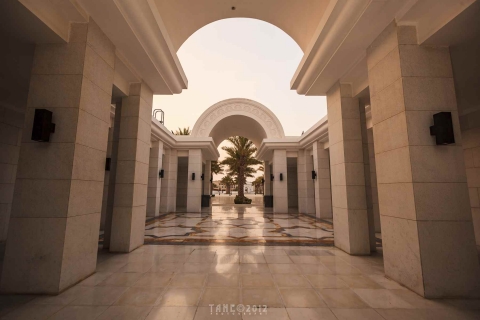
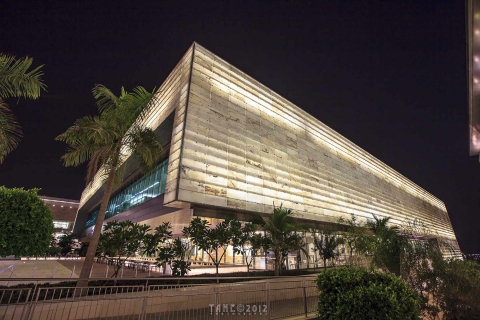
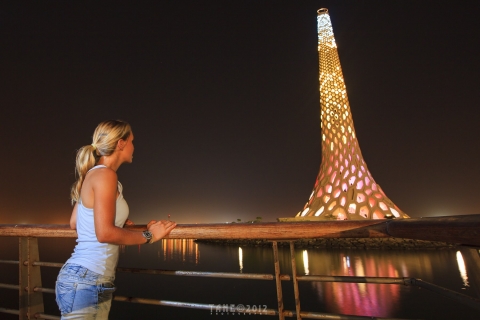
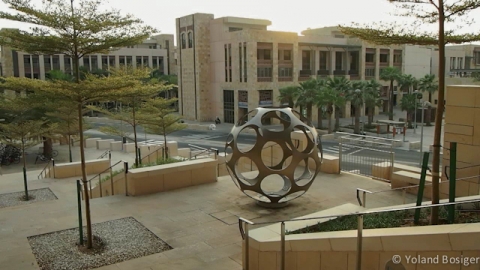
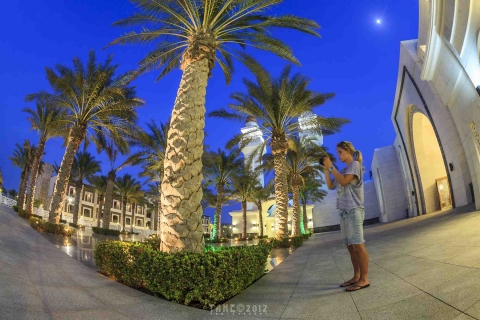
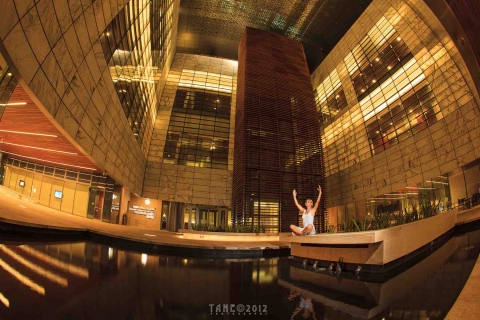
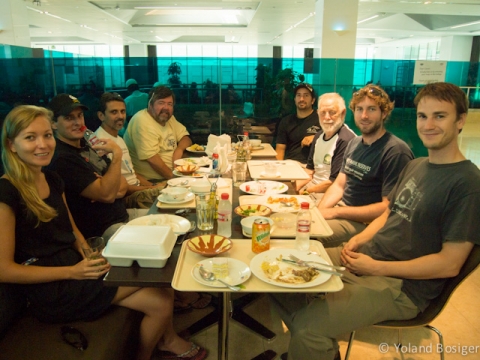
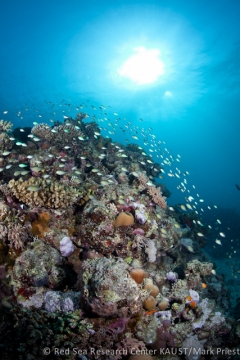
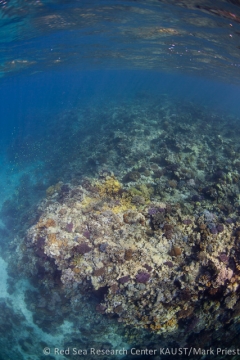
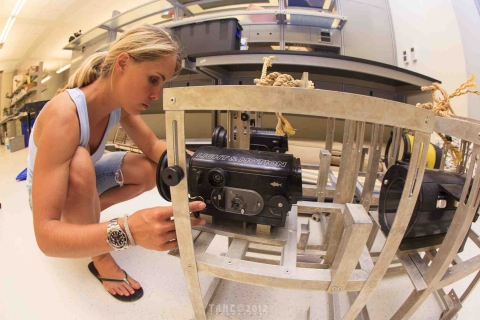
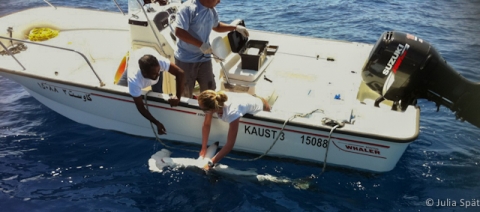
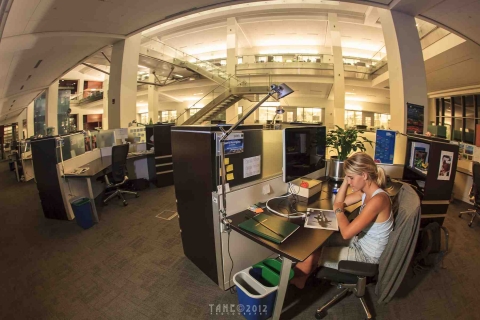
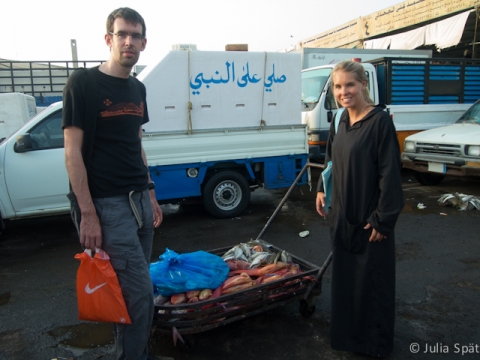
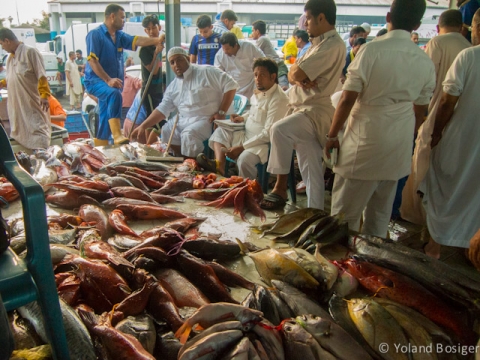


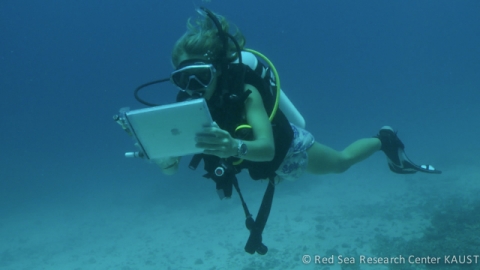
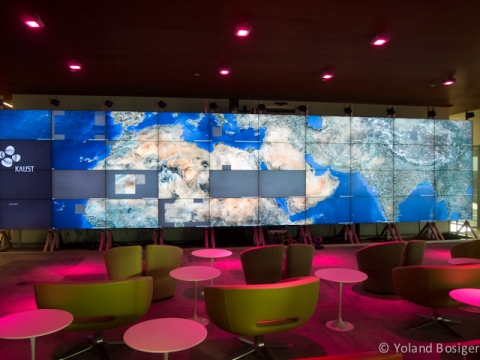
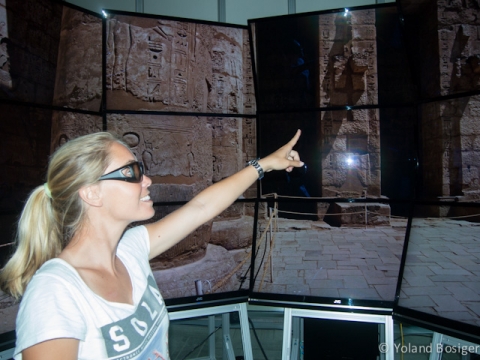
Whoohoo – fantastic Yolly